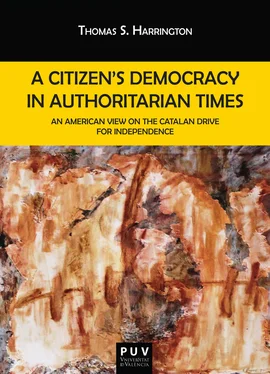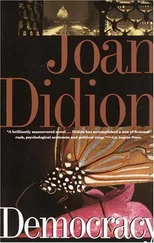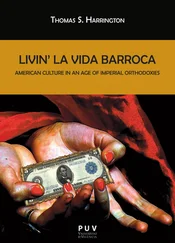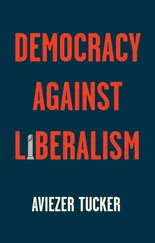What makes the people in these places resist, and persist in the pursuit of a civic and political “something more” while so many Western “others” seem content to sit back and watch the technicolor implosion of their deliberative processes and democratic institutions?
My sense is that it a great deal to do with both history and memory, or to put it more specifically, the need and ability of people subjected, over centuries, to state-sponsored campaigns of “invisibilization” to develop cultural practices which say, with calm and persistent stubbornness, that despite what you, our nominal overlords, say to us and the rest of the world about our status as a non-entity, “we exist”.
It is the experience of knowing from an early age that what is said at the dinner table or the conversation between friends at a bar about who we are as a collective and what we are really all about is usually much more accurate than what is said about the same issues the schools we attend or at the highest levels of the government and the media. And it is also knowing that if you want to preserve these local versions of truth, you must create structures and institutions of your own, on the margins of officialdom, to preserve them.
It is to know from an early age that that massive media distortions about you and your way of being are nothing new, but rather the perennial bread and butter of those who persist in wanting to control you, and that the only solution to it is to testify, again and again, and in small ways and large, to what you have discerned to be more or less true and real. And in this sense it is to develop and sustain a trust in your self and your immediate others that is increasingly rare in our world.
The prime goal of the matrix of corporate, military and media power under which we all now live is to induce an deep sense of helplessness and atomization among us. Though it pains me to admit it, they have, so far, been quite successful in their efforts to induce these sentiments in us.
But the battle is not yet over. If we are to buck the set of “inevitabilities” these people have in store for us, we will have to analyze with very clear eyes the techniques of those in our midst who are resisting with a relatively high degree of success.....and the extent to which the leaders of the aforementioned matrix of power will got to preserve the status quo.
There is, in my view, no better place begin this course of study than in Catalonia. There we have, with all its flaws and tics, a movement of people who in the midst of relative prosperity are saying that they are neither satisfied nor apathetic, that they have dreams of a different life and that they are willing to peacefully and persistently organize to achieve it. And, of course, we have a corrupt and inflexible state bent on punishing them for the sin of persisting in the pursuit of their goals.
Sounds different? It is.
And hopefully the following pages will provide a better sense of where this unique civic effort came from, and where it might be taking the Catalans, and possibly the rest of Europe, in the not too distant future.
[1]Hayden White, “The Historical Text as Literary Artifact”, Tropics of Discourse: Essays in Cultural, Criticism, Baltimore, London: Johns Hopkins University Press, 1978, 81-100.
Rapping on the Cast(i)le Gates: Nationalism and Culture-Planning in Contemporary Spain [2]
On December 18, 2001 two members of Spain’s ruling conservative party, María San Gil, a city councilor from the Basque Country and national party official, and Josep Piqué, the Catalan-born Minister of Foreign Affairs, presented their much awaited ponencia [3]on “Patriotismo Constitucional” to the press in Madrid. As the pre and post-presentation spin generated by the Partido Popular made quite clear, the proposal, which was ostensibly rooted in Habermas’ notion of Constitutional Patriotism, was designed with the outsized pretension of closing the debate on how best to guarantee comity between the state’s various nationalistically-defined political communities.
That debate had begun (in the formal sense at least) 24 years earlier (August 1977), when a commission of seven newly-elected members of parliament (Miquel Roca, Jordi Solé-Tura, Manuel Fraga, Miguel Herrero de Miñon, Gabriel Cisneros, José Pedro Pérez-Llorca, and Gregorio Peces-Barba) came together in the hope of crafting Spain’s first democratic constitution since the Second Republic (1931-39). The draft that emerged from their meetings in the fall of 1977, which would form the kernel the Constitution which was ratified by popular sovereignty in December of 1978, sought to steer a middle path between Spain’s deeply rooted, and highly antinomic centralizing and decentralizing legacies. Aware of the dangers of tilting too strongly to one side or the other of this contentious issue, which had wreaked havoc on Spanish political and civic life for over a century, they sought refuge in calculated vagueness:
La Constitución se fundamenta en la indisoluble unidad de la nación española, patria común e indivisible de todos los españoles, y reconoce y garantiza el derecho a la autonomía de las nacionalidades y regiones que la integran y la solidaridad entre todas ellas. (“Constitución” s.n.)
Aware of the key role that language and cultural symbols have in mediating juridical abstractions the authors went on to state that:
El castellano es la lengua española oficial del Estado. Todos los españoles tienen el deber de conocerla y el derecho a usarla. Las demás lenguas españolas serán también oficiales en las respectivas Comunidades Autónomas de acuerdo con sus Estatutos. La riqueza de las distintas modalidades lingüísticas de España es un patrimonio cultural que será objeto de especial respeto y protección.
La bandera de España está formada por tres franjas horizontales, roja, amarilla y roja, siendo la amarilla de doble anchura que cada una de las rojas. Los estatutos podrán reconocer banderas y enseñas propias de las Comunidades Autónomas. Estas se utilizarán junto a la bandera de España en sus edificios públicos y en sus actos oficiales. (“Constitución” s.n.)
These ambiguous passages from the Constitution’s “Preliminary Title” designed to express the new polity’s core presumptions, along with its Title VIII, devoted to questions of its territorial organization, paved the way for the creation and ratification, between December 1979 and April 1981, of statutes of autonomy for Catalonia, the Basque Country and Galicia. In the first two of these three “Autonomous Communities,” historistically-defined nationalist parties (Convergència i Unió in Catalonia, the Partido Nacionalista Vasco in the Basque Country) quickly acceded to political power committed to maximizing local control over economic and political resources. Since then, neither party has relinquished its control of their respective autonomous parliaments. In contrast, the Galician autonomous government has always been controlled by parties or by coalitions whose missions are state-wide in profile and thus considerably less energetic in terms of their autonomist demands.
In this context, we can speak of the period between 1980 and the present as one in which both Catalan and Basque nationalists sought (with Galicians essentially riding on their coattails) to establish, through political thrust and parry, the full parameters of the vaguely defined prerogatives accorded them in the Constitution of 1978. The transfers of power in each case have been considerable, and include, among many other things, autonomic control over education and health care, and in the particular realm of the Basque country, the right to levy taxes. However, during much of the latter half of this twenty-year period, a time during which the spell of exhilaration and calculated forgetting (el pacto de olvido) which had made the Spanish transition possible began to wear off, the long-term sustainability and desirability of this largely ad hoc and highly opportunistic arrangement has been frequently questioned by important centralists as well as an important number of their nationalist counterparts on the so-called periphery.
Читать дальше












